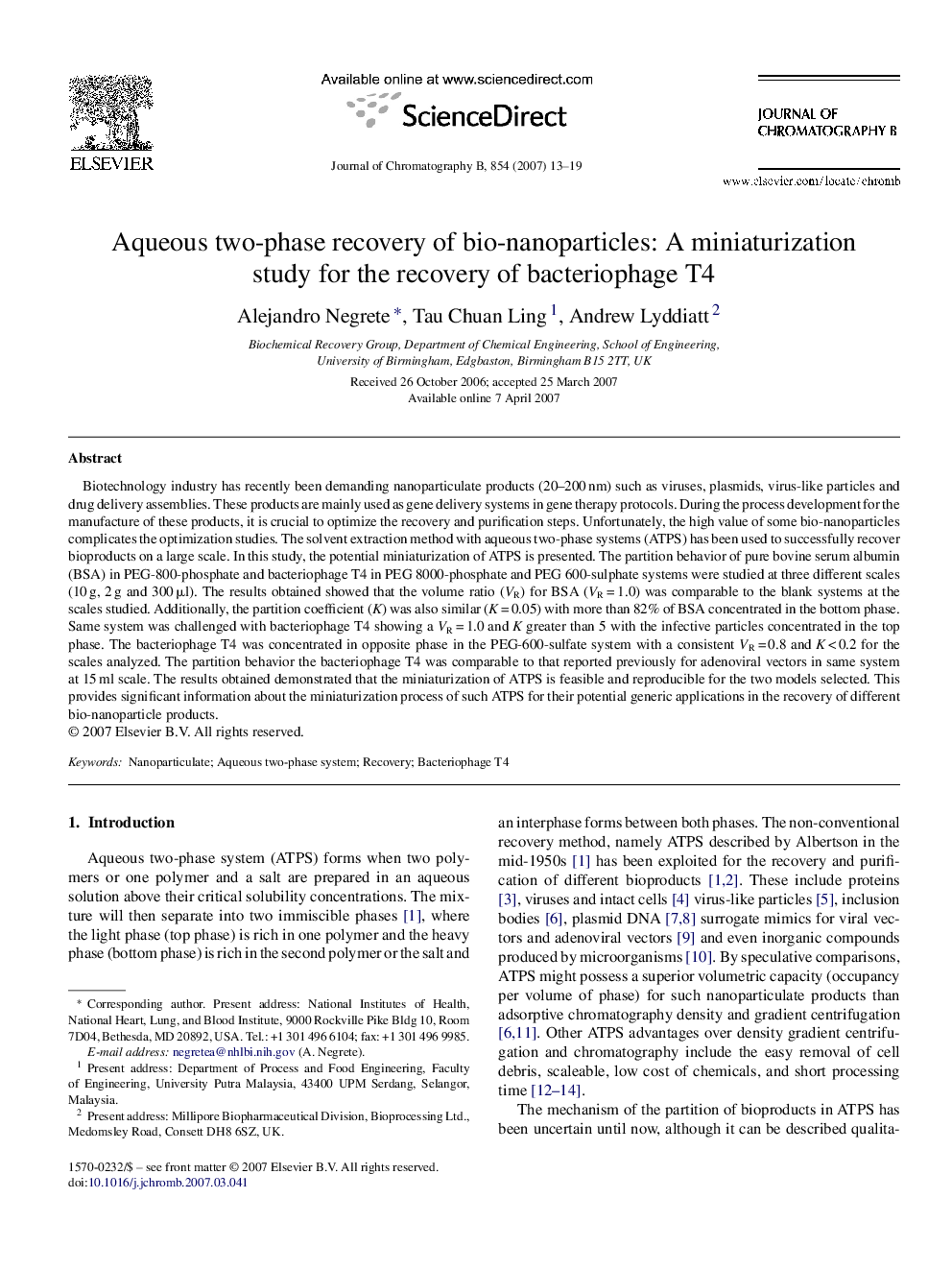| Article ID | Journal | Published Year | Pages | File Type |
|---|---|---|---|---|
| 1217783 | Journal of Chromatography B | 2007 | 7 Pages |
Biotechnology industry has recently been demanding nanoparticulate products (20–200 nm) such as viruses, plasmids, virus-like particles and drug delivery assemblies. These products are mainly used as gene delivery systems in gene therapy protocols. During the process development for the manufacture of these products, it is crucial to optimize the recovery and purification steps. Unfortunately, the high value of some bio-nanoparticles complicates the optimization studies. The solvent extraction method with aqueous two-phase systems (ATPS) has been used to successfully recover bioproducts on a large scale. In this study, the potential miniaturization of ATPS is presented. The partition behavior of pure bovine serum albumin (BSA) in PEG-800-phosphate and bacteriophage T4 in PEG 8000-phosphate and PEG 600-sulphate systems were studied at three different scales (10 g, 2 g and 300 μl). The results obtained showed that the volume ratio (VR) for BSA (VR = 1.0) was comparable to the blank systems at the scales studied. Additionally, the partition coefficient (K) was also similar (K = 0.05) with more than 82% of BSA concentrated in the bottom phase. Same system was challenged with bacteriophage T4 showing a VR = 1.0 and K greater than 5 with the infective particles concentrated in the top phase. The bacteriophage T4 was concentrated in opposite phase in the PEG-600-sulfate system with a consistent VR = 0.8 and K < 0.2 for the scales analyzed. The partition behavior the bacteriophage T4 was comparable to that reported previously for adenoviral vectors in same system at 15 ml scale. The results obtained demonstrated that the miniaturization of ATPS is feasible and reproducible for the two models selected. This provides significant information about the miniaturization process of such ATPS for their potential generic applications in the recovery of different bio-nanoparticle products.
